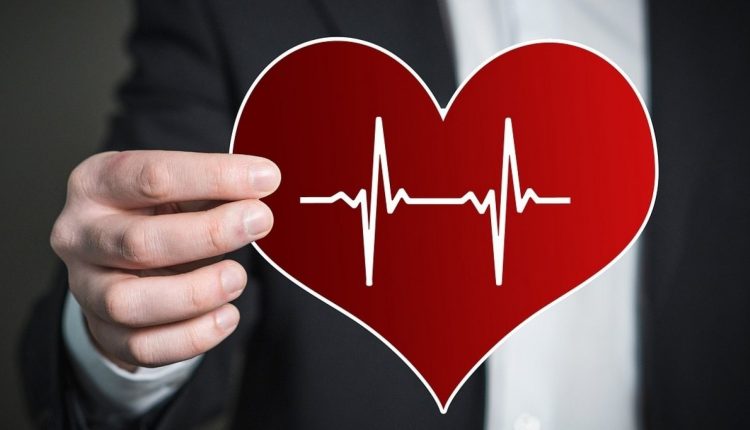
Coronarography, what is this examination?
Coronarography is a diagnostic test whereby the blood flow inside the coronary arteries can be studied using contrast medium and X-rays
The procedure is one of the cardiac catheterisation techniques, as it involves the introduction of a catheter up to the heart, with the aim of injecting contrast medium into the coronary artery.
Coronography, the access point is usually the femoral artery at groin level, or the brachial artery
The duration of the examination is about 15 minutes, but it can take more than an hour.
If an obstruction or stenosis is detected during the procedure, the cardiologist can immediately perform a coronary angioplasty to dilate the vessel and restore coronary patency.
STRETCHERS, LUNG VENTILATORS, EVACUATION CHAIRS: SPENCER PRODUCTS ON DOUBLE BOOTH AT EMERGENCY EXPO
Why this examination is performed
This examination is often performed in conjunction with coronary angioplasty and is mainly prescribed to assess the patency status of the coronary arteries, identify narrowing (stenosis) and occlusions, or other abnormalities in the vascular system that supplies the myocardium with blood.
The health of the coronary arteries is an important indicator of cardiac function.
Specifically, coronarography is indicated in the case of
- coronary artery disease or associated symptoms (e.g. angina pectoris, breathlessness, neck or arm pain)
- pain not due to other pathologies, felt at the level of the stomach, chest, neck, jaw or arm and suspected to be of ischaemic origin;
- congenital heart defects;
- heart valve abnormalities or valvulopathies.
In addition, a coronarography may be useful for scheduling heart surgery or monitoring the results of operations such as a coronary bypass.
The main causes of occlusion or narrowing of the coronary arteries include:
- atheromas due to atherosclerosis;
- thrombi or emboli;
- episodes of vasculitis;
- coronary spasm.
How should I prepare for a coronarography
Coronarography requires specific preparation: first of all, the patient undergoes a series of clinical examinations, including a cardiological examination; the cardiologist also performs an objective examination, assessing any drug therapy and possible allergic reactions to drugs or contrast medium.
In order to be able to perform the coronarography, the patient is recommended to fast for at least 8 hours on the day of the procedure; depending on the case, the doctor may also recommend temporarily suspending ongoing therapeutic treatments.
At the end of the coronarography there is an observation period to monitor the patient’s condition
Generally, a few hours’ rest to one night’s stay is sufficient, after which you can be discharged and resume normal activities.
If the patient has also undergone coronary angioplasty, at least two days of hospitalisation are required.
This is an invasive type of examination: because it involves the introduction of a vascular catheter and exposure to x-rays using intravenous contrast medium.
Like most invasive procedures, this examination has a number of risks and contraindications, which the cardiologist is responsible for explaining thoroughly before the procedure.
*This is indicative information: it is therefore necessary to contact the facility where the examination is being performed to obtain specific information on the preparation procedure.
Read Also
Emergency Live Even More…Live: Download The New Free App Of Your Newspaper For IOS And Android
Instrumental Examinations: What Is The Colour Doppler Echocardiogram?
Supraventricular Tachycardia: Definition, Diagnosis, Treatment, And Prognosis
Identifying Tachycardias: What It Is, What It Causes And How To Intervene On A Tachycardia
Tachycardia: Is There A Risk Of Arrhythmia? What Differences Exist Between The Two?
Do You Have Episodes Of Sudden Tachycardia? You May Suffer From Wolff-Parkinson-White Syndrome (WPW)
Transient Tachypnoea Of The Newborn: Overview Of Neonatal Wet Lung Syndrome
Paediatric Toxicological Emergencies: Medical Intervention In Cases Of Paediatric Poisoning
Valvulopathies: Examining Heart Valve Problems
What Is The Difference Between Pacemaker And Subcutaneous Defibrillator?
Heart Disease: What Is Cardiomyopathy?
Inflammations Of The Heart: Myocarditis, Infective Endocarditis And Pericarditis
Heart Murmurs: What It Is And When To Be Concerned
Broken Heart Syndrome Is On The Rise: We Know Takotsubo Cardiomyopathy
Cardiomyopathies: What They Are And What Are The Treatments
Alcoholic And Arrhythmogenic Right Ventricular Cardiomyopathy
Difference Between Spontaneous, Electrical And Pharmacological Cardioversion
What Is Takotsubo Cardiomyopathy (Broken Heart Syndrome)?
Dilated Cardiomyopathy: What It Is, What Causes It And How It Is Treated
Heart Pacemaker: How Does It Work?
Basic Airway Assessment: An Overview
Assessment Of Abdominal Trauma: Inspection, Auscultation And Palpation Of The Patient
Pain Assessment: Which Parameters And Scales To Use When Rescuing And Treating A Patient
Airway Management After A Road Accident: An Overview
Tracheal Intubation: When, How And Why To Create An Artificial Airway For The Patient
What Is Traumatic Brain Injury (TBI)?
Acute Abdomen: Meaning, History, Diagnosis And Treatment
Poison Mushroom Poisoning: What To Do? How Does Poisoning Manifest Itself?
Chest Trauma: Clinical Aspects, Therapy, Airway And Ventilatory Assistance
The Quick And Dirty Guide To Pediatric Assessment
EMS: Pediatric SVT (Supraventricular Tachycardia) Vs Sinus Tachycardia



